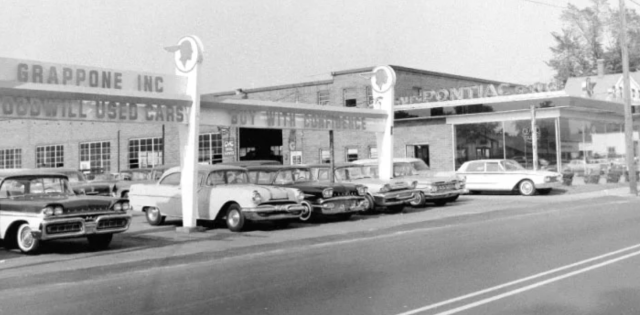Despite media reports, Silicon Valley predictions and Wall Street prognostications to the contrary, the principle of personal vehicle ownership in America is not under threat from autonomous vehicles and ride-hailing services.
That’s according to NADA’s Senior Vice President of Public Affairs Jonathan Collegio, who, in the latest NADA video is busting the myth on the end of personal vehicle ownership. “One of the things you hear a lot about in the automotive industry and the retail technology sector is the convergence of autonomous vehicles and ride-hailing services like Uber or Lyft,” Collegio said.
The media reports suggest that autonomous technology will make ride hailing so cheap that people will get rid of their personal automobiles and go exclusively to using ride hailing, Collegio explained. “Now, representing automobile dealers, this is obviously something we need to look into, because we sell cars. We wanted to know if people were really as interested in getting rid of their vehicles as reports from Silicon Valley and Wall Street have suggested.”
What NADA has found instead is that consumer demand for personal vehicle ownership remains overwhelmingly strong across all demographics. A recent NADA-commissioned survey found that even after hearing about all the benefits of using ride-hailing services, nine in 10 consumers said they’d rather keep owning their car. The survey oversampled millennials, the largest group of consumers, and found that four out of five millennials said the same thing—they prefer to own their own car.
“The results were really interesting. They go against the conventional wisdom that’s out there, that folks are going to get rid of their vehicles and move exclusively to these services,” Collegio said. “It grounds us in a reality that people like their cars.”
The High Cost of Waiting for a Ride
Consumers like their cars because the value proposition of owning a car goes beyond getting from one place to another, Collegio noted. “It’s more than that. It’s the ability to go wherever you want to go, whenever you want to go with no waiting. With no one controlling your agenda. Just being able to get in the car and go.”
And Americans are increasingly on the go. The Department of Transportation estimates that the average U.S. household takes 10 car trips per day. Most of them are extremely mundane, but necessary trips, like going to the grocery store, the dry cleaner, going to a friend’s house, taking the kids to school or to soccer practice, Collegio pointed out. “Trips that are so mundane, you don’t think of them three hours later. That’s how people generally use their cars.”
What’s more mundane than trips for household chores? Waiting. The average wait time for an Uber or Lyft is about nine minutes. For 10 trips a day, a customer completely dependent on ride-hailing services would spend 90 minutes a day waiting.
“If you consider what your life would look like if you had to use Uber or Lyft or a ride-hailing service for each of those mundane trips, it starts to not look all that attractive, mainly because of wait times,” Collegio explained. “A lot these reports don’t estimate the time cost of money– People value their time, and suddenly adding an aggregate block of 90 minutes waiting time to your day is not something people want to do.”
What is Your Time Worth?
If people really do believe the old adage that time is money, their wallets are in for some sticker shock when it comes to rid-hailing services. Most pro-ride hailing reports suggest that the cost savings of using ride-hailing services over owning a car is $3,445 per year per household. That probably sounds pretty good to the average consumer.
However, the numbers don’t bear out when consumers dive deeper. Even on the conservative side of calculating for an average six minute wait for a ride-hailing service multiplied by 10 trips a day for 365 days a year, the cost savings of ride hailing over personal vehicle ownership comes out to under $10 per day, Collegio said. “You’re talking about exchanging an hour a day in waiting for a savings of about $9.44 per day. That’s less than minimum wage in 16 states.”
NADA Chairman Wes Lutz recently made a similar point on the overly optimistic cost savings reports of ride-hailing services in remarks to the Automotive Press Association in Detroit this month.
For most consumers, the savings would have to be a lot more than $10 a day for them to give up their time. Of the 1,200 consumers surveyed by NADA, 88.5 percent said they’d have to save at least $15 in order to give up an hour of their day to waiting, 50 percent said it would need to be $50 or more in savings, and 35 percent said they would not take any amount of money to wait an hour a day. “Silicon Valley and Wall Street are just kind of ignoring the fact that time is valuable and that there are a lot of people who are not interested in saving money if it means giving up their time,” Collegio pointed out.
The threat to personal vehicle ownership isn’t going to come from a free and open marketplace or lack of consumer appetite for owning a car, as the NADA survey shows. If there is a threat, Collegio said, it’s more than likely going to come from lawmakers tilting the scales too much when it comes to regulating the marketplace. “If it’s going to come from anywhere, it’s probably going to come from state and local governments that are being pressured by large companies,” Collegio said. “That’s the thing for our customers to really be aware of.”
Check out the video and see why Collegio says owning a car is not like owning a drill:










